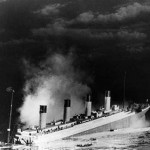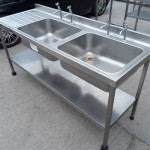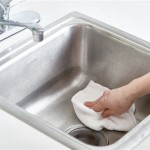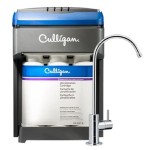Washer and Dryer Hook Up To Sink
Connecting a washer and dryer to a sink involves tapping into the existing plumbing and electrical systems. This provides the necessary water supply and drainage for the washing machine and venting for the dryer. While seemingly straightforward, the process requires careful planning and execution to ensure safety and efficiency. Improper installation can lead to leaks, flooding, and even electrical hazards. This guide will outline the necessary steps and considerations for successfully hooking up your washer and dryer to a sink.
Water Supply for the Washing Machine
Most washing machines require both hot and cold water connections. Typically, these connections are made to the dedicated shut-off valves located behind the sink. These valves control the flow of water to the faucet and can be adapted to supply the washing machine. Standard washing machine hoses, usually reinforced rubber or braided stainless steel, connect to these valves and then to the corresponding inlets on the back of the washing machine. It's crucial to ensure a tight seal at all connection points to prevent leaks. Using Teflon tape on the threaded connections can help create a watertight seal.
If dedicated shut-off valves are not present, new ones may need to be installed. This may involve some plumbing work, such as cutting into the existing pipes and soldering new valves in place. It is highly recommended to consult a qualified plumber for this task if you lack experience in plumbing.
The water pressure should also be considered. Washing machines require a specific water pressure range for optimal performance. If the water pressure is too low, the washing machine may not fill properly. If it's too high, it could damage the machine's internal components. A pressure gauge can be used to measure the water pressure. If necessary, a pressure regulator can be installed to adjust the pressure to the appropriate level.
Drainage for the Washing Machine
Proper drainage is essential for a functioning washing machine. The wastewater from the washing machine needs to be directed to the drain system. Often, the simplest way to achieve this is by connecting the washing machine drain hose to a standpipe under the sink. This standpipe should be connected to the drainage system and fitted with a P-trap to prevent sewer gases from entering the home. The drain hose should be secured to the standpipe, typically with a clamp, to prevent it from coming loose during the wash cycle and causing flooding.
The height of the standpipe is also an important factor. It should be high enough to prevent siphoning, which can cause contaminated water to be drawn back into the washing machine. The recommended height is typically between 30 and 39 inches.
An alternative to using a standpipe is connecting the drain hose directly to the sink drain tailpiece using a special washing machine drain adapter. This adapter creates a sealed connection and prevents leaks. However, this method is less common and may not be suitable for all sink configurations.
Dryer Vent Connection and Electrical Requirements
Unlike the washing machine, the dryer doesn't require water connections. However, it does require proper venting to exhaust hot air and moisture. A dryer vent hose should be connected to the back of the dryer and routed to an exterior vent. The vent should be as short and straight as possible to maximize airflow and minimize lint buildup, a potential fire hazard. Flexible foil ducting should be avoided as it restricts airflow and can easily trap lint.
Both the washer and dryer require dedicated electrical circuits. Washing machines typically require a 120-volt circuit, while dryers typically require a 240-volt circuit. It's crucial to verify the voltage requirements for your specific appliances and ensure that the electrical system can handle the load. Connecting appliances to inadequate circuits can lead to overloaded circuits, tripped breakers, and potential fire hazards. If necessary, a qualified electrician should be consulted to upgrade the electrical system.
Proper grounding is another critical safety consideration. Both the washer and dryer should be properly grounded to prevent electrical shock. This usually involves connecting the appliance's ground wire to a grounding wire in the electrical box or to a grounding rod. If you are unsure about the grounding process, it's best to consult a qualified electrician.

How To Hookup Washing Machine A Kitchen Sink

Washing Machines Installation Bosch Home Appliances Singapore

8 Small Laundry Room Ideas

How To Hook Up A Washer And Dryer Simple Guide

Plumbing For Double Washer And Dryer A New Trend All Things Thrifty
Plumbing A Washer Dryer Combo Into Kitchen Sink Diy Home Improvement Forum

Washer Dryer Hookup Installation Service

Pin Page

The Utility Sink Or Laundry Gets You Organized Sweeten Com

Connecting A Washing Machine And Tumble Dryer To The Same Sink Drain Home Improvement Stack Exchange







